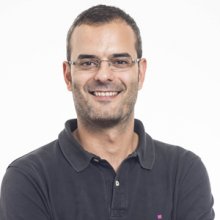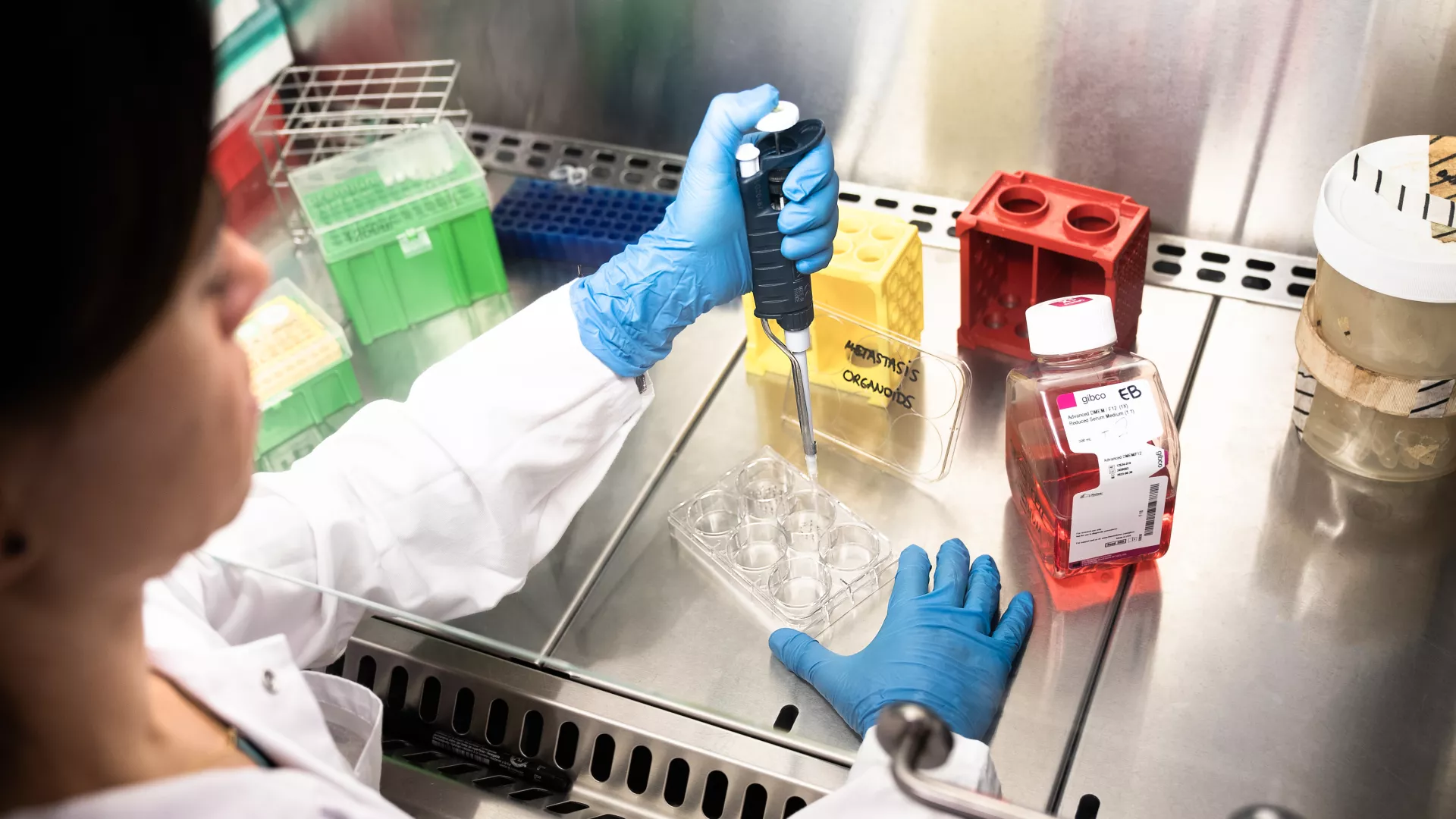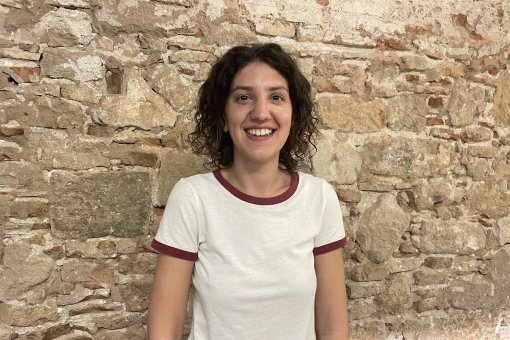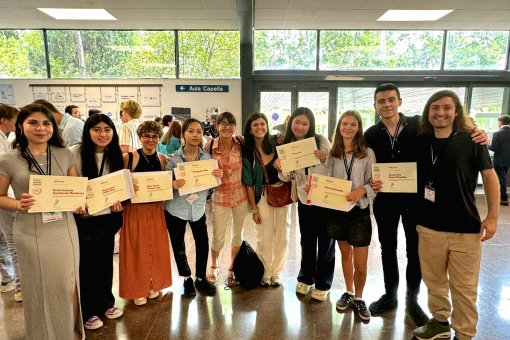Images
Participants

Contact

Dr. Salvador Aznar Benitah, Group Leadcer of the Stem Cells and Cancer laboratory at IRB Barcelona and ICREA Professor, has been selected as one of Cell Press's "50 Scientists that Inspire". This recognition comes as a result of his paradigm-shifting work in cancer metabolism and aging research.
Dr. Aznar Benitah’s life and career span research focuses and continents—and began in Montreal, Canada, where he was born. He moved to Spain with his family at six and then lived and studied in Madrid before returning to Canada, where he earned a BSc in biochemistry with honors from McGill University in 1998. His doctoral studies brought him back to Spain, and he completed a PhD at the Biomedical Research Institute (IIBM) in Madrid in 2003.
In 2007, after completing his postdoctoral work in Fiona Watt’s laboratory at the London Research Institute, Dr. Aznar Benitah established his own lab at the Center for Genomic Regulation as a Junior ICREA researcher. Dr. Aznar Benitah was promoted to ICREA Research Professor in 2014 and moved IRB Barcelona as a senior researcher.
His team’s work aims to understand the molecular mechanisms underlying adult stem cell function during homeostasis, aging, and cancer. Dr. Aznar Benitah and his colleagues have special interests in epigenetics, spatiotemporal regulation of stem cells (circadian rhythms), and the link between metastasis and their epigenetic and metabolic mechanisms of function.
As the first scientist in his family and a researcher in a country that is less prominent in the scientific field compared to others, he recognizes the importance of breaking down barriers to create a more just scientific community. But he is also focused on life outside his work: he has two children—Mateo (14 years old) and Lucía (10 years old)—who are the best part of his life, as well as a long-lasting interest in the evolution of writing and language, guitar playing, and graphic novels.
In this interview by Cell Press, he discusses some of the most exciting moments of discovery from his career thus far, advocates for removing the barriers faced by researchers who belong to underrepresented gender and ethnicity groups, and shares his excitement for the future of his field.
What inspired you to become a scientist?
I am not sure anything really inspired me, rather than just being extremely curious about my surroundings. There is no scientific tradition whatsoever in my family.
But I do remember that while most of my friends were playing football or basketball at school, I was at a nearby little field that was filled with plants and insects. I watched them, collected them, and brought them home (to my mother’s dismay!) to watch them interact. I was fascinated by astronomy, and with a little microscope that I borrowed from my older sister, I would look at leaves, insect parts, my own skin cells, etc.
I think that curiosity is still as strong in me today.
What does innovation in science look like to you?
For me, innovation in science is pursuing new ideas while taking into account all your previous knowledge—and making sure that such knowledge does not constrain the development of new hypotheses and conclusions.
I think it is quite hard to achieve this; we all gradually become comfortable with what we have done so far in our careers, making it difficult to get out of our comfort zone.
Tell us about a moment of discovery that has been a highlight of your career.
It’s difficult to pick just one, so I’ll highlight two moments.
In 2017 we identified and described metastatic-initiating cells in various types of human tumors. While identifying them, we saw that the cells depend on fatty acid and cholesterol signaling to initiate and progress metastases.
Gloria Pascual, the senior research associate who did most of this work in my lab, and I immediately recognized how exciting this finding was. I remember when we saw the first result that unequivocally told us that indeed they were the (elusive) metastatic cells. We just looked at each other with profound joy. We knew that this finding was going to open so many research opportunities in our respective careers. And indeed, this is what has happened; we now have many lines of research that are helping us understand the process of metastasis in a very detailed manner.
Another memorable moment was finding that many of the functions of our adult stem cells are regulated by circadian rhythms. For the first time, this finding has led us to start to understand how peripheral organs coordinate their functions with other peripheral organs and the central nervous system. Importantly, this coordination is lost during aging, and this lack of synchrony contributes to aging.
Are there barriers or hurdles you face or have had to face in your career or your science? How do/did you navigate these?
I do not think I have faced special hurdles compared to my colleagues and friends. I have witnessed throughout my career that minorities and women often face many more barriers in their professional lives than I do, especially when trying to reach principal investigators or directorial positions. Many solutions and changes have been implemented, fortunately, to deal with these unjust situations (although there is still probably much more to do!).
That said, I did feel at the beginning of my career (for instance when traveling to meetings) that some people would not take me too seriously when I said that I worked in Spain, which was accompanied somewhat by a feeling that I did not really belong in that crew of people. Thankfully, this is no longer an issue, but back when I was a junior PI, I just decided to go on with my work and try to not let that feeling affect my career. It was not an easy thing to do, but I managed it.
What are you most excited about in your field right now?
I am really excited about many things! I am amazed about certain technological advances that are allowing us to perform in vivo studies in an unprecedented manner. We now routinely combine single-cell transcriptomics, single-cell epigenomics, low-input metabolome/lipidome, and low-input proteome with spatial proteomics and transcriptomics. This, coupled with an ever-increasing computational capability, allows us to characterize in a short period of time what would have taken us 20 to 30 years before these technologies existed.
Besides these technical advances, I think we are getting closer and closer to developing many anti-cancer therapies. Cancer researchers are not only fine-tuning immunotherapy but also pursuing many new targets—many of which relate to tumor metabolism—that in my opinion are really promising.
I am also very excited about the aging field. It’s so exciting at the moment! In part due to the application of the technologies that I mention above. I think we are going to witness many breakthroughs in the aging field in the upcoming years.
Do you have words of wisdom for students thinking about pursuing a career in science?
I don’t like to provide too much advice, since I think we all find our way through different paths and respond to challenges differently. But I think there are some common characteristics in all scientists: the passion for science, excitement for knowledge, and the hope that maybe their science could at some point improve people’s lives.
That passion for science is what allows us to persevere when confronted with difficult moments: not getting the position you wanted, getting papers and grants rejected, etc. All those can become manageable difficulties if the overall passion for science is there to start with.
What do you hope the next 50 years look like for your field or for science more broadly? What changes would you like to see?
I think we are going to see amazing advances in integrating very large amounts of data. I know this is already happening, but I think it will exponentially explode.
For instance, regarding the fields of aging and cancer, once we can start compiling information about the proteome, epigenome, transcriptome, and metabolome—not only at the single-cell level, but even at the subcellular level—and establish correlations of that data from thousands of samples, I am sure we are going to start seeing patterns never seen before.
I also think that we are going to see ever more sophisticated in vitro systems (like multilineage organoids combining different organs) that will allow us to functionally test new anti-cancer and anti-aging therapies using large-scale screenings in an unprecedented manner.
And as always with science, who knows what completely unexpected new things it will bring us in the next 50 years!
-
Text and photo credits: Cell Press.
About IRB Barcelona
The Institute for Research in Biomedicine (IRB Barcelona) pursues a society free of disease. To this end, it conducts multidisciplinary research of excellence to cure cancer and other diseases linked to ageing. It establishes technology transfer agreements with the pharmaceutical industry and major hospitals to bring research results closer to society, and organises a range of science outreach activities to engage the public in an open dialogue. IRB Barcelona is an international centre that hosts 400 researchers and more than 30 nationalities. Recognised as a Severo Ochoa Centre of Excellence since 2011, IRB Barcelona is a CERCA centre and member of the Barcelona Institute of Science and Technology (BIST).




